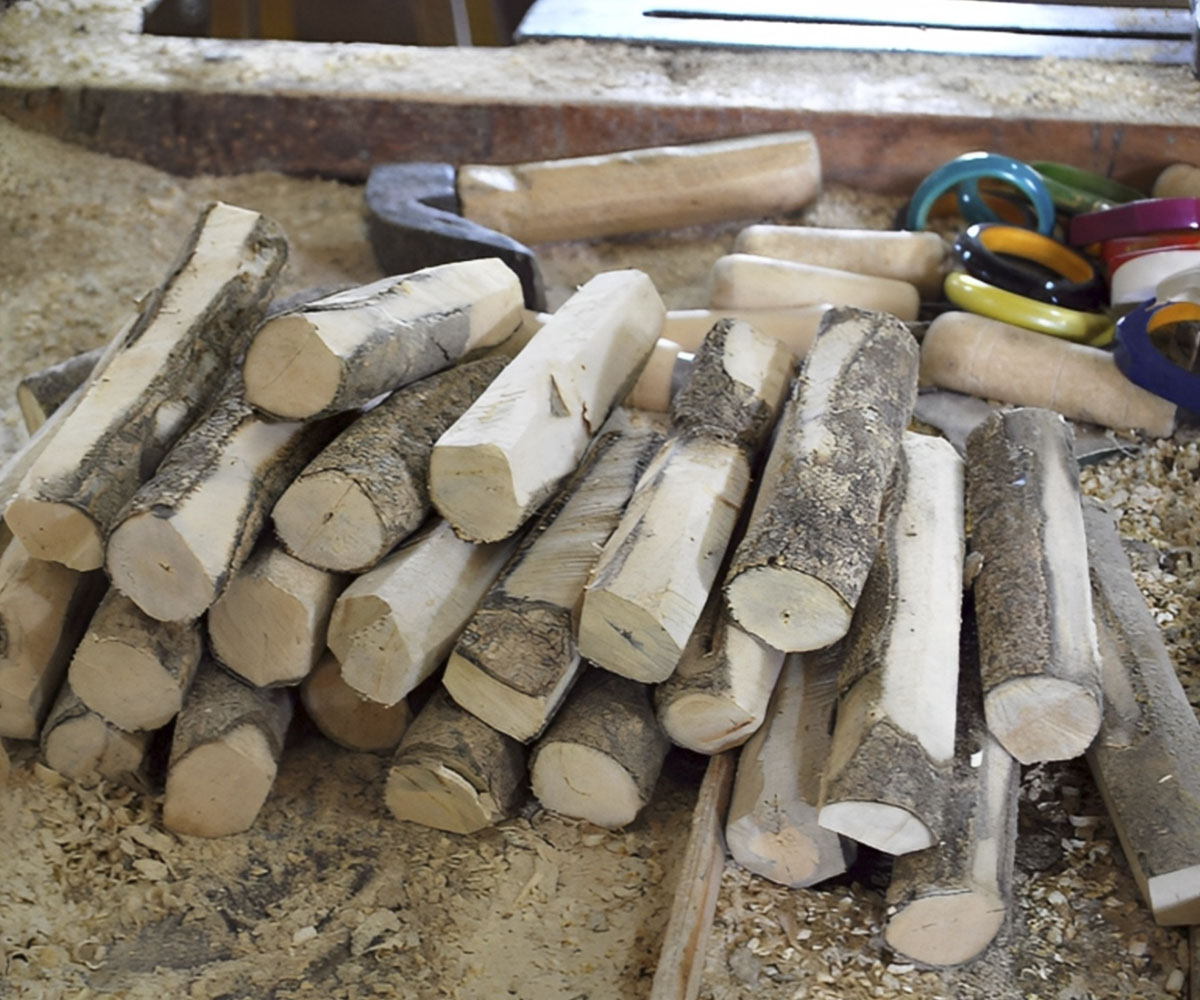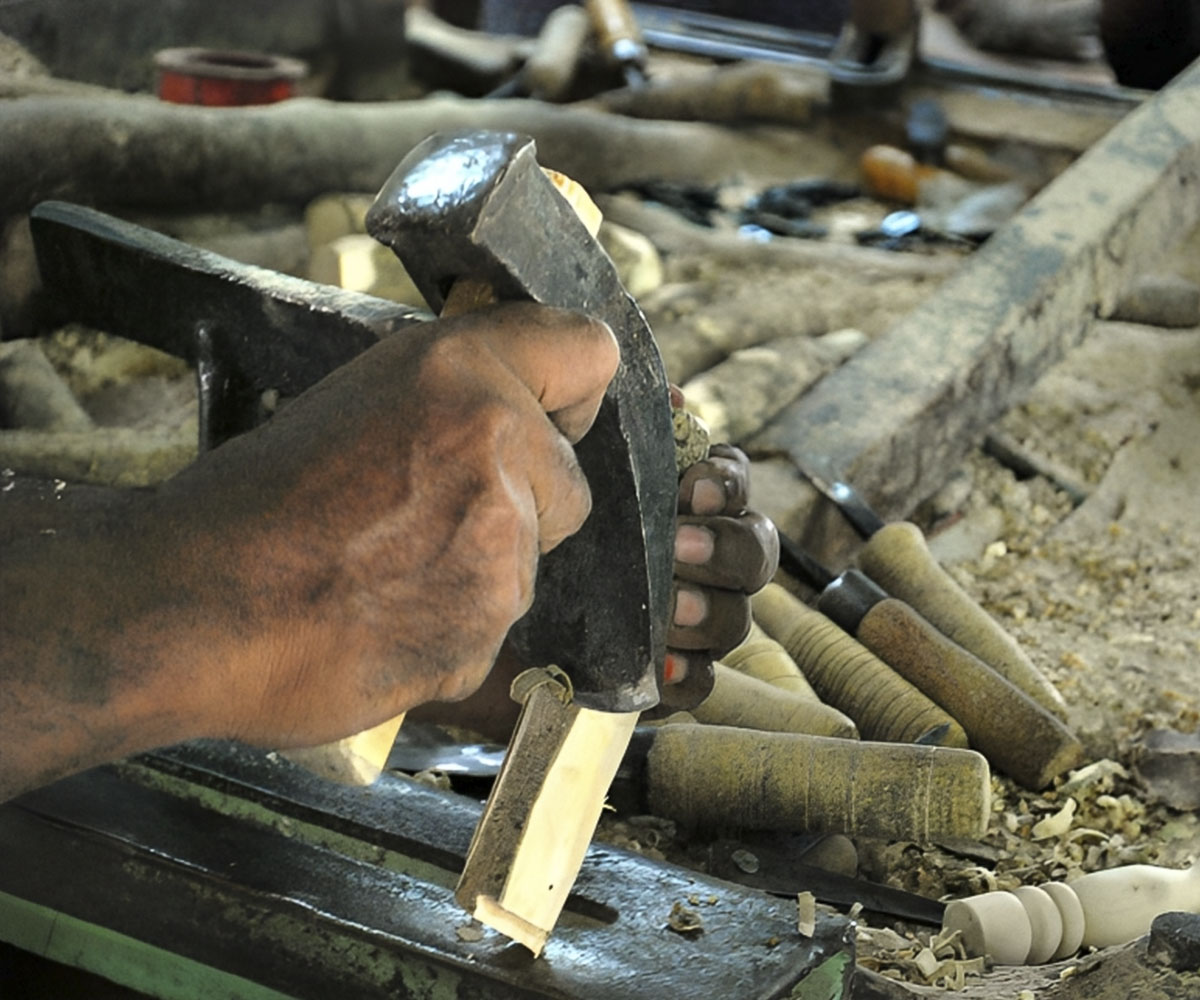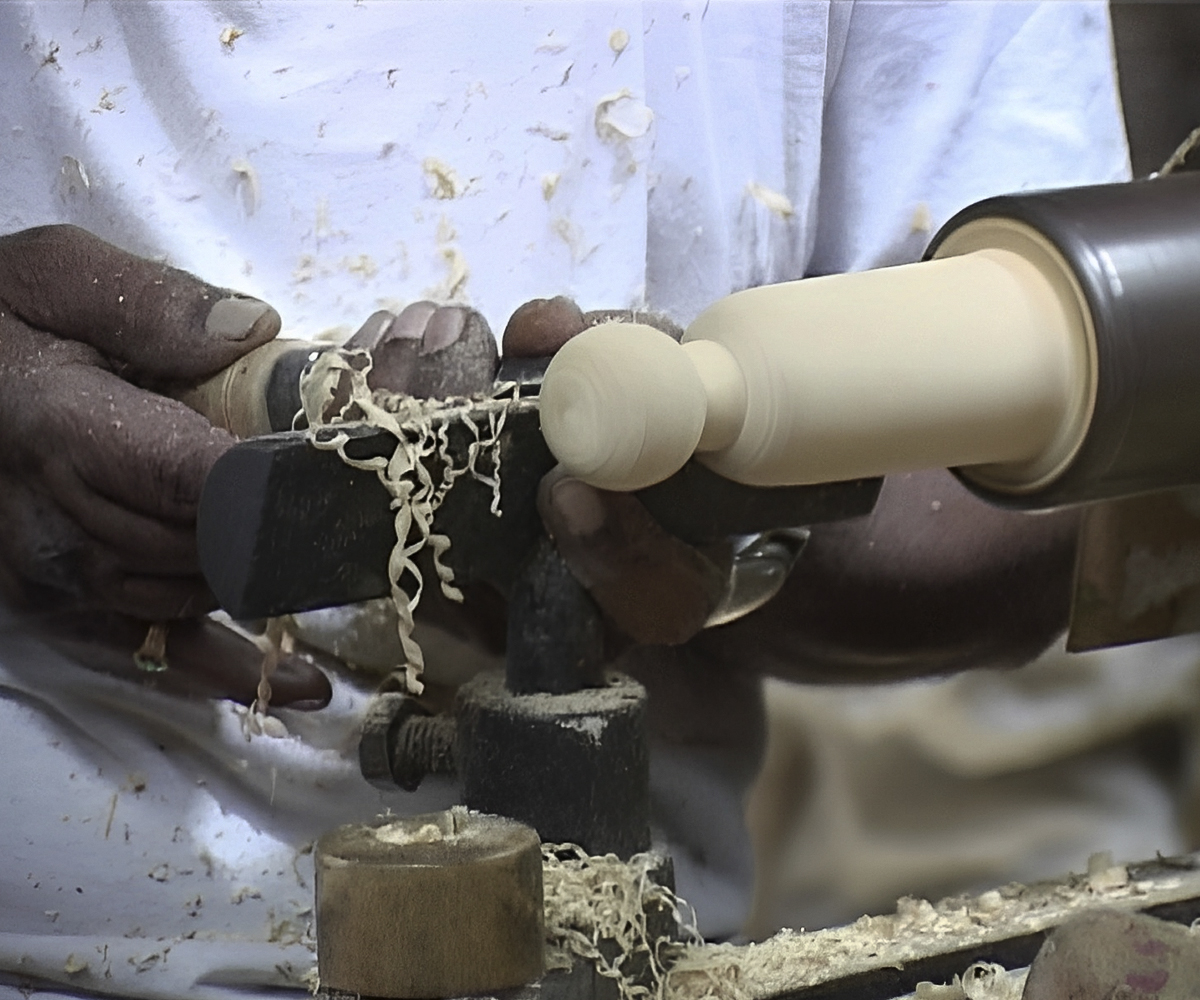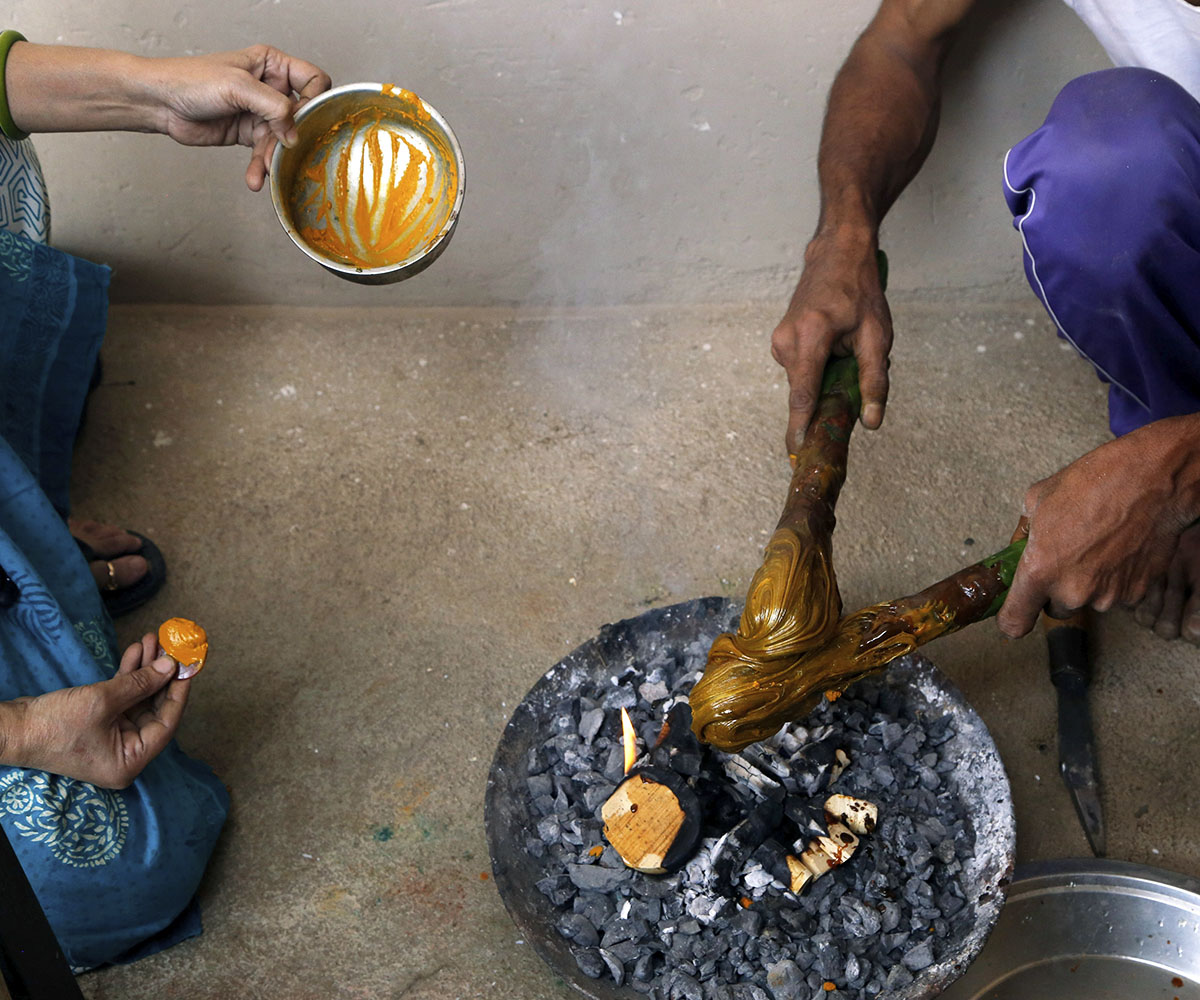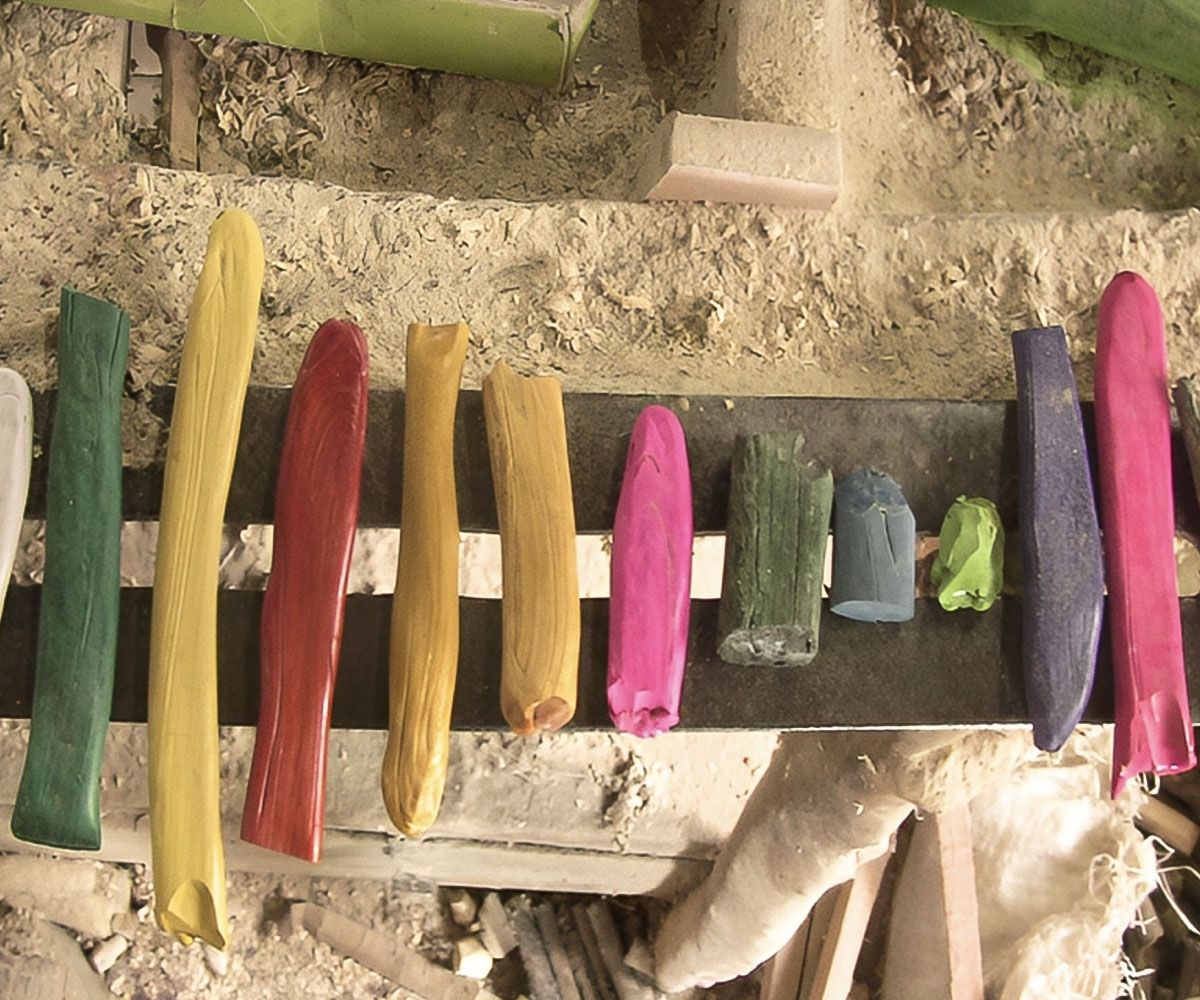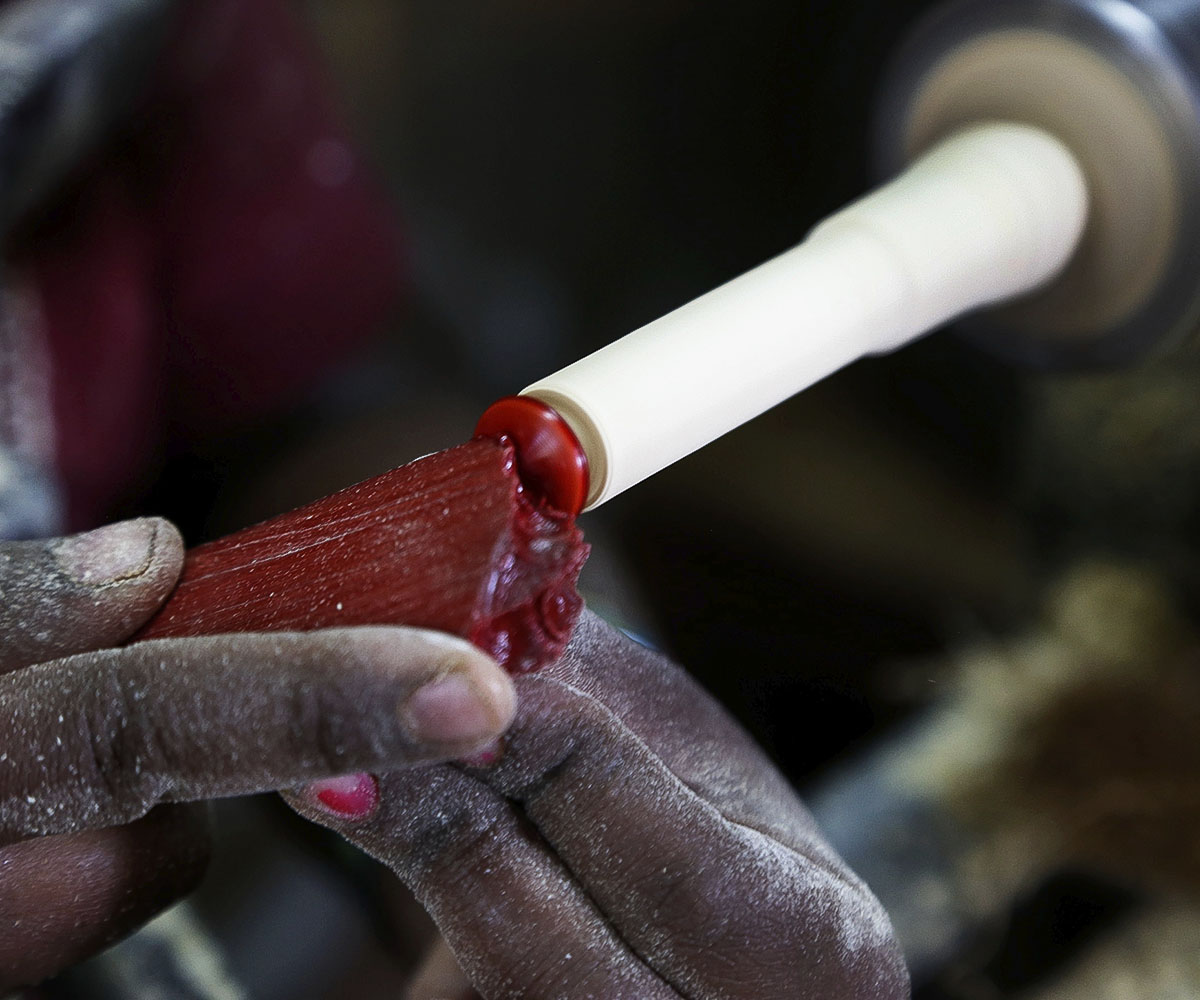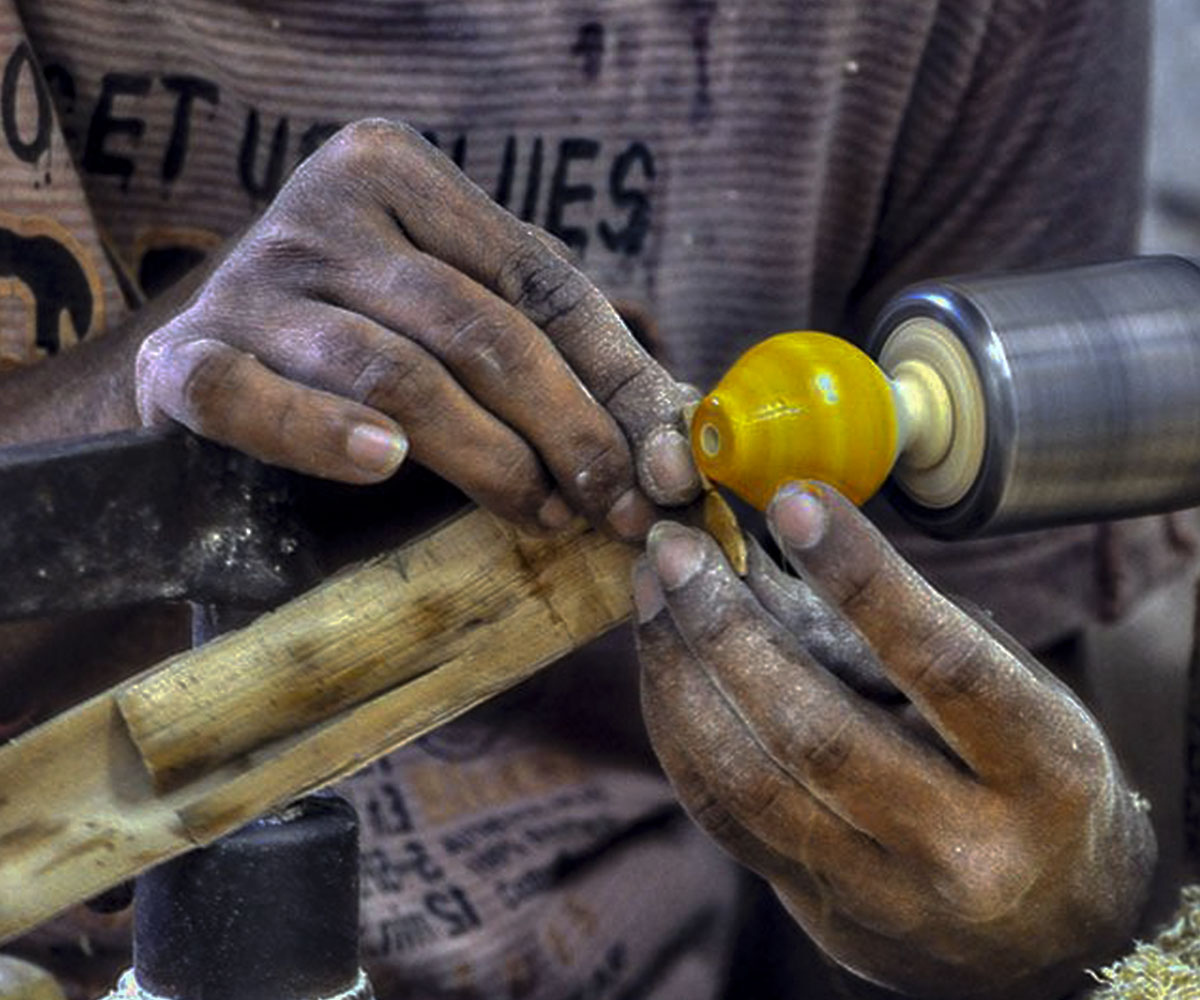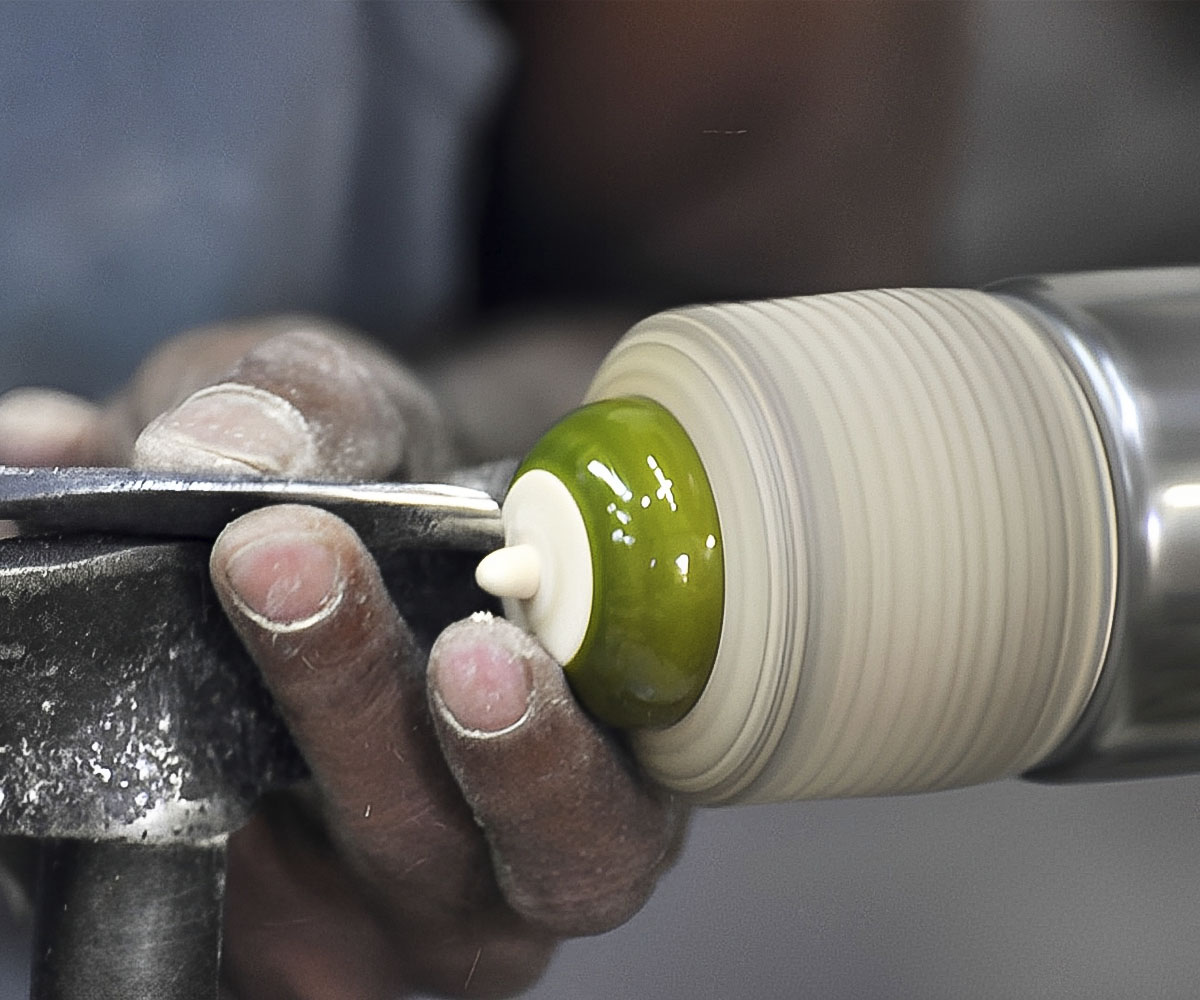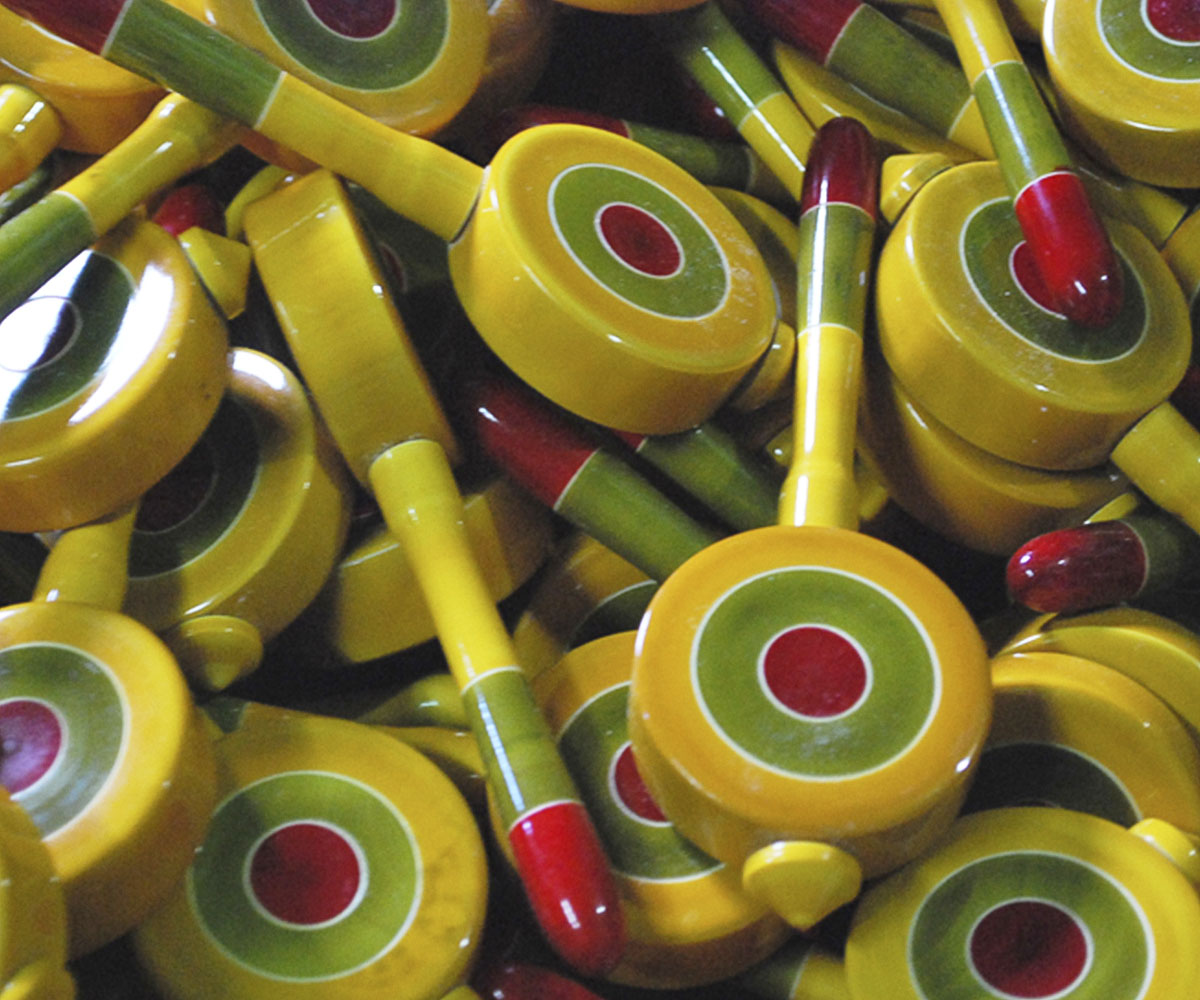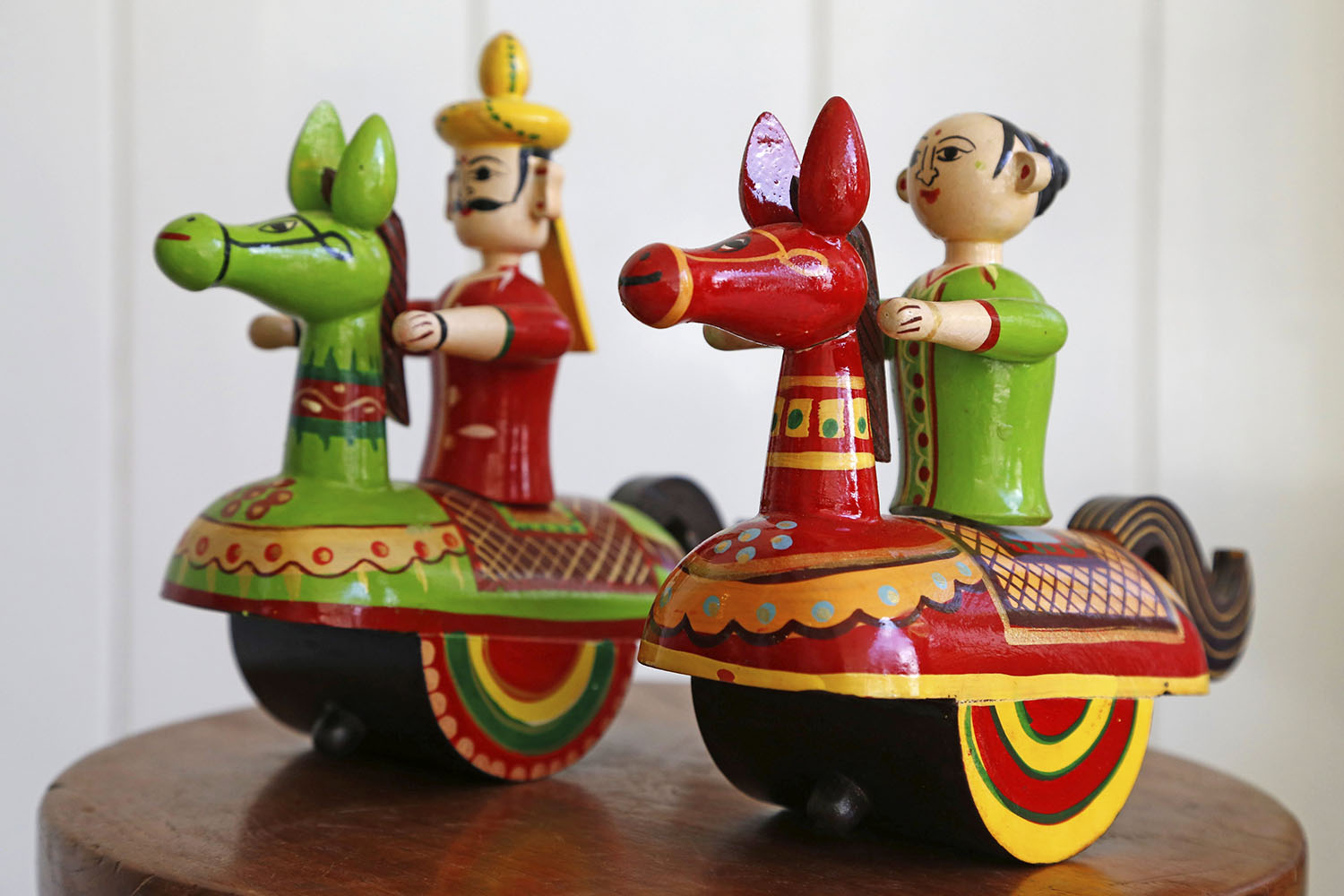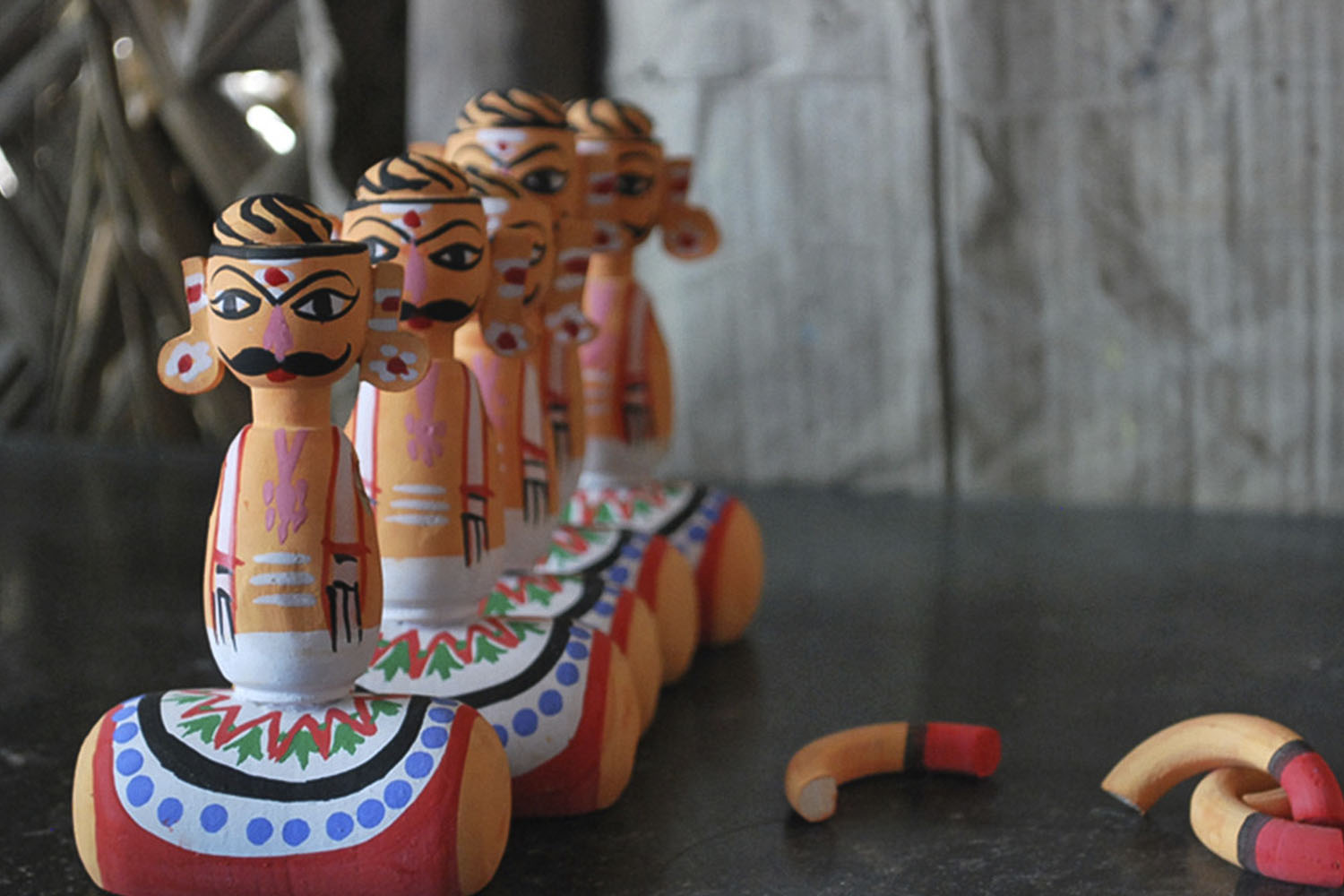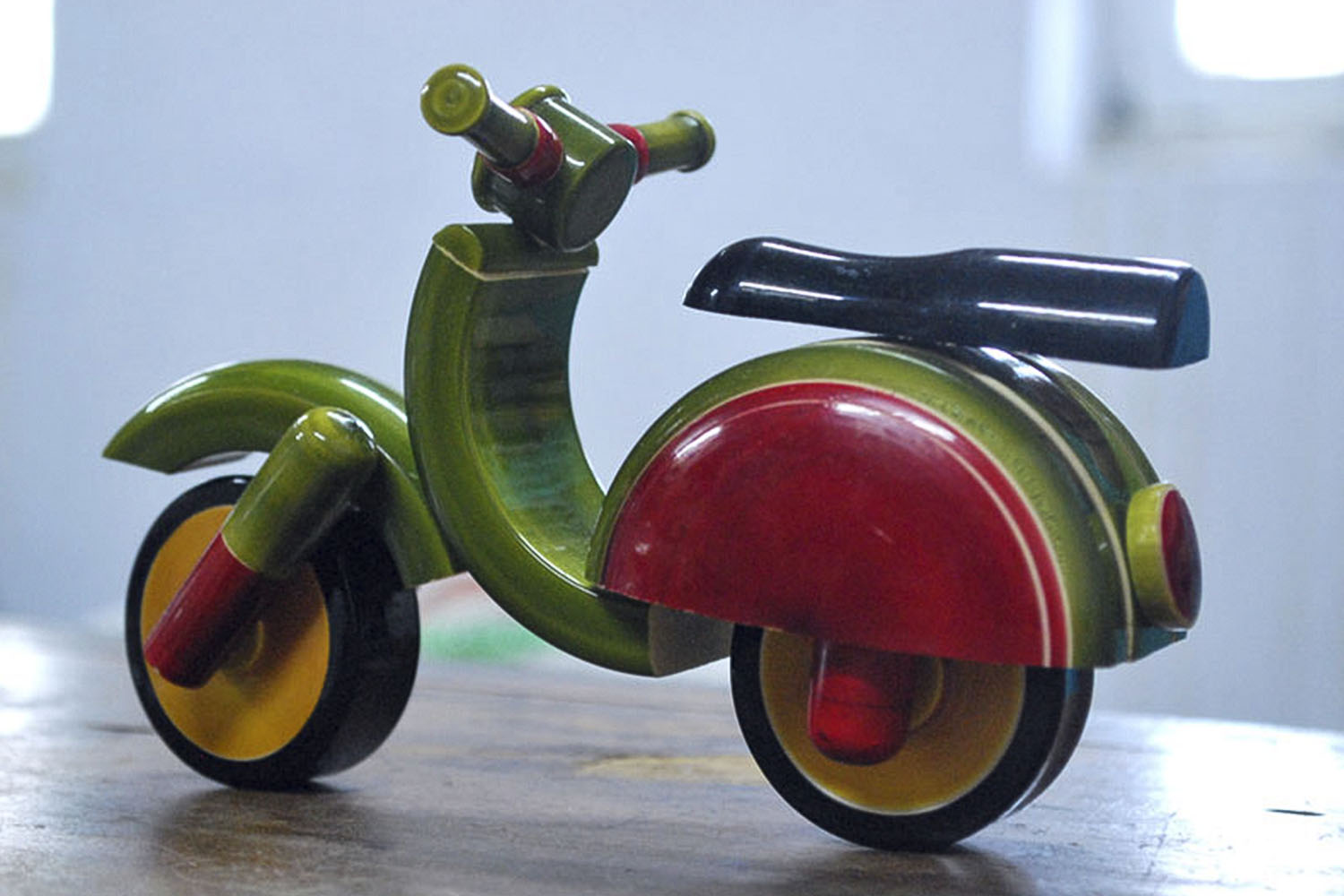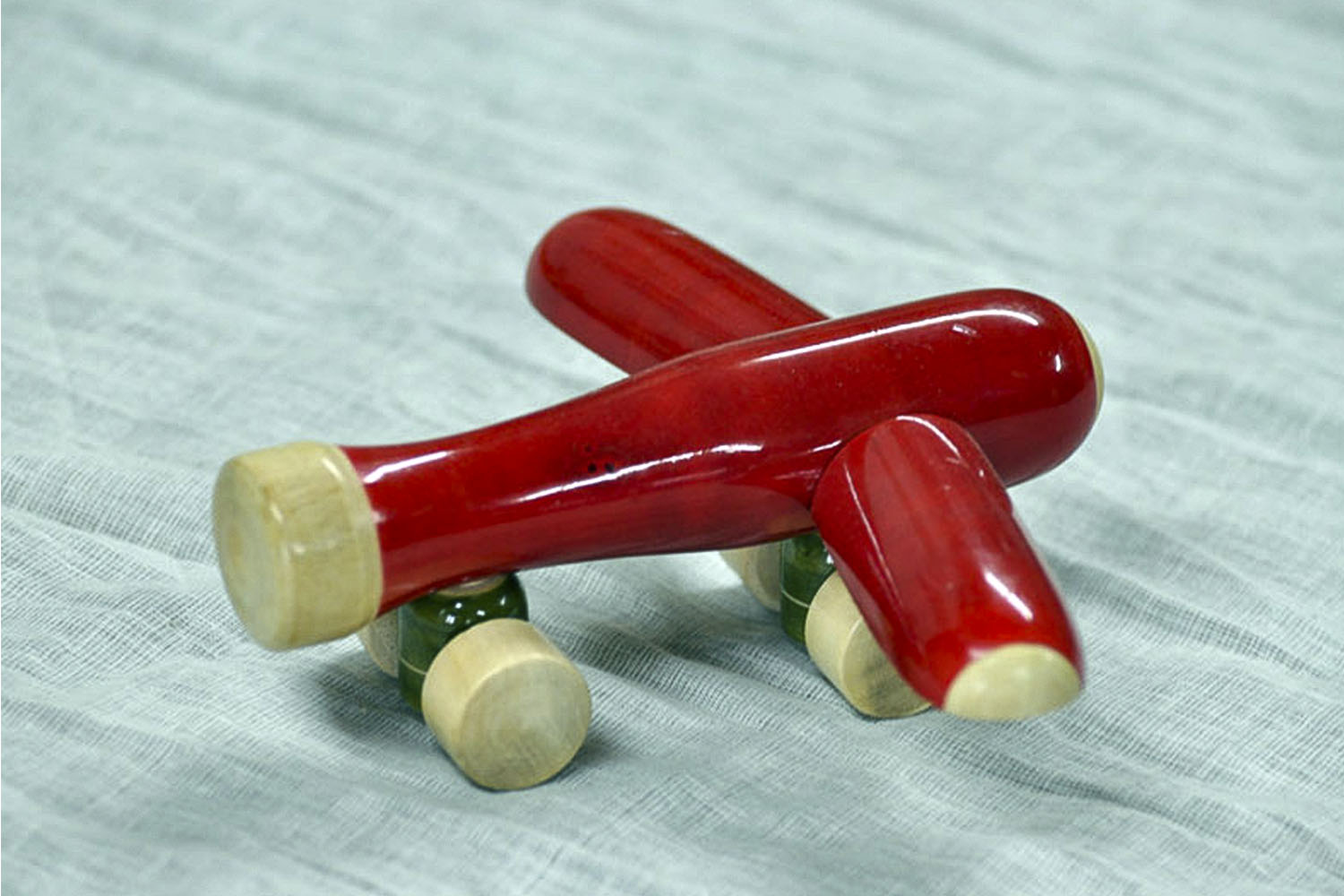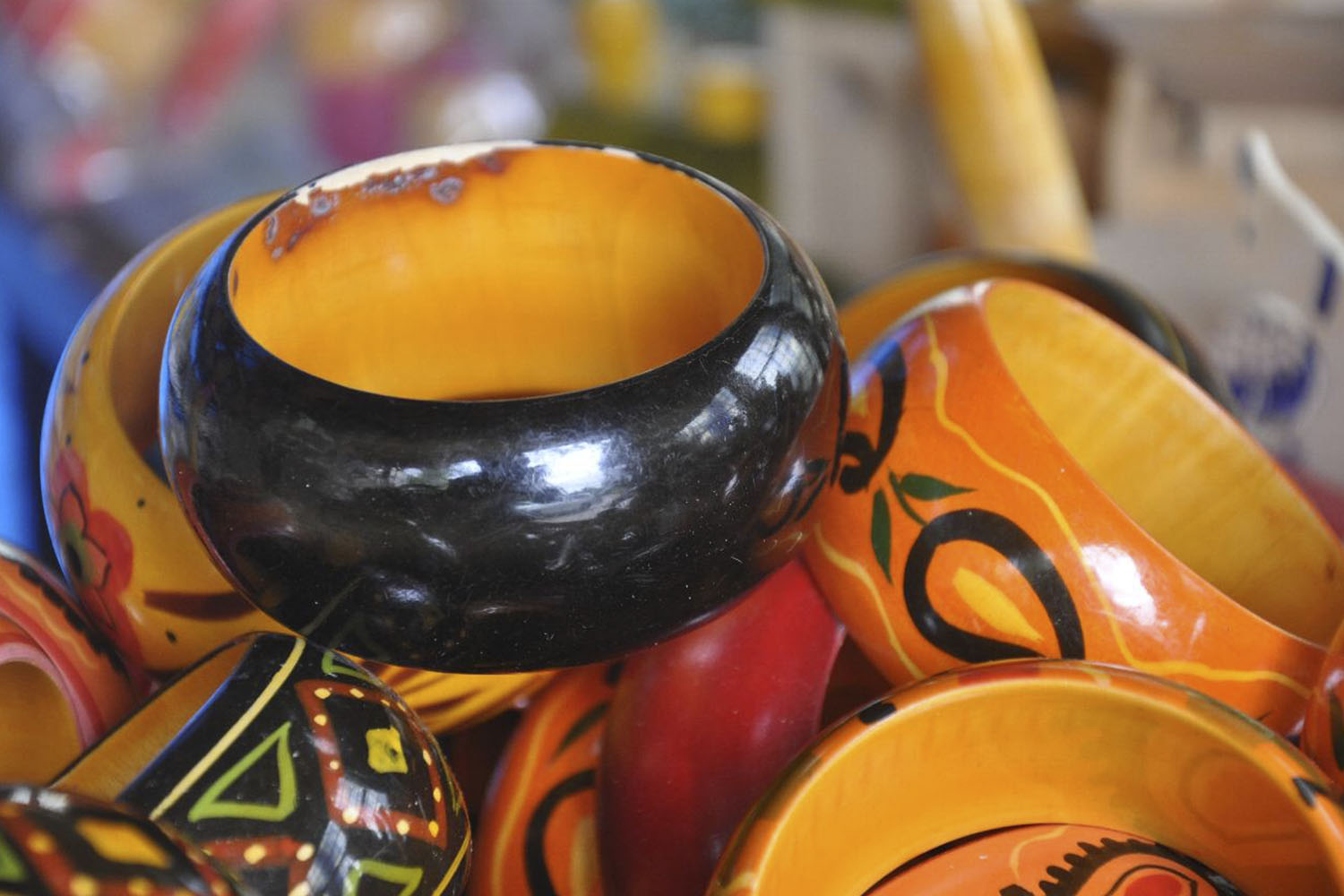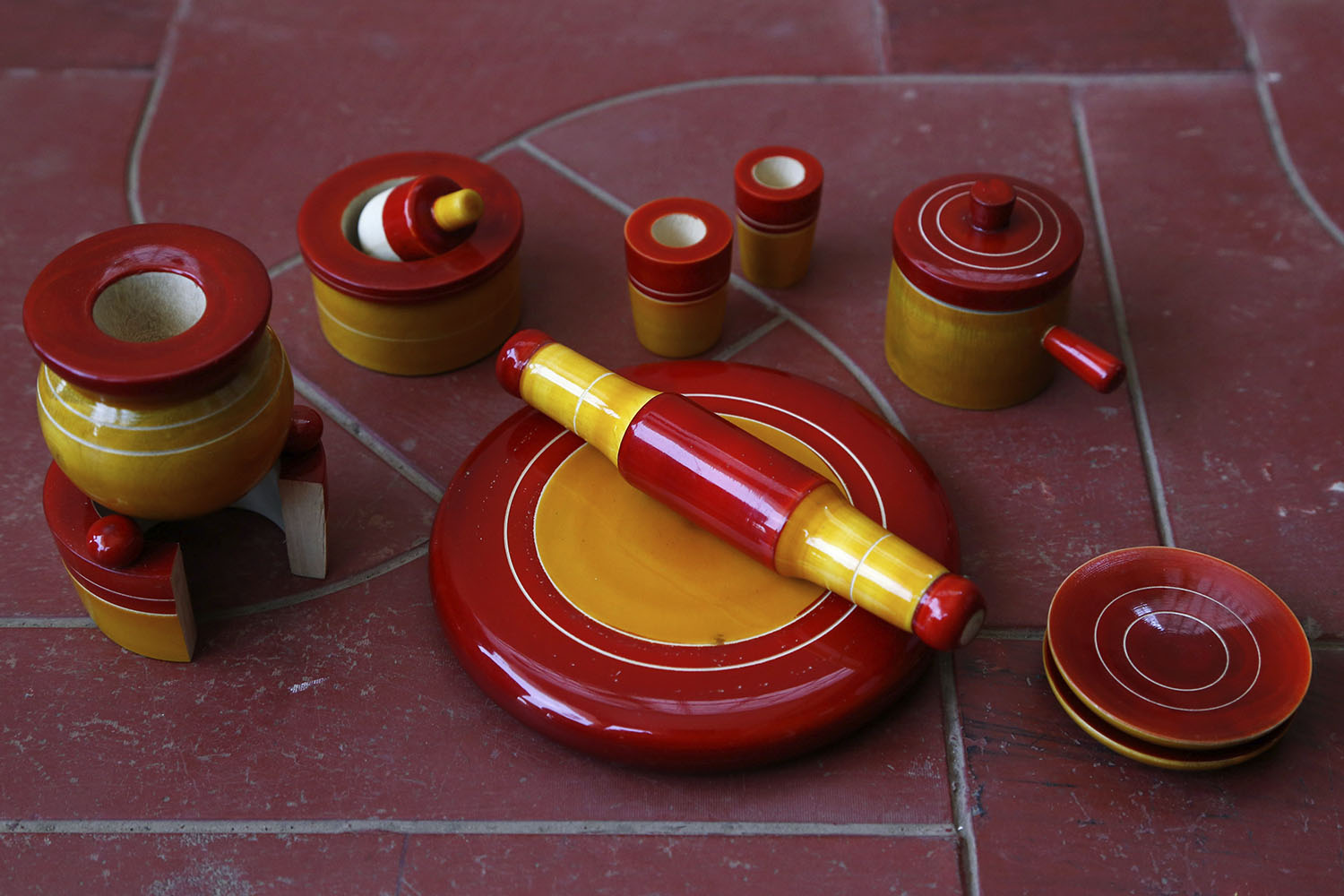ARTICLE
Channapatna Wooden Toys
Manufactured using traditional methods, Channapatna wooden toys are named after the town where the craft tradition originated and continues to be practised today. Channapatna — also known as Gombegala Ooru, meaning “city of toys” in Kannada —is located between Bengaluru and Mysuru in Karnataka. These wooden dolls, toys and other lacquerware items are known for their light-coloured wood as well as simple designs painted in pigments made from lac and natural dyes. The use of lac lends the surface a distinctive sheen. Historically crafted by the Chitragar community, the craft is currently practised by others, including Hindu Dalit artisans and Muslim artisans.
The history of the lacquerware industry in Channapatna is unclear, although locals and artisan communities claim that the industry was extensively patronised by Tipu Sultan. Some accounts claim that the sultan invited Persian artisans to train craftspeople in the Mysore region in the techniques of lacquerware and toy-making, while others claim that his patronage also extended to creating opportunities for export by promoting the toys to Persian traders.
In the 1900s, Syed Bawa Saheb Miyan, also known as Bawas Miyan, a superintendent of the Government Industrial School at Channapatna, travelled to Japan to learn more about lacquerware techniques and designs. Upon his return, he added the technique to the curriculum of the Industrial School, helping popularise the craft. He also experimented with raw materials and tools to improve the process.
The toys, dolls and other objects manufactured in Channapatna are made of the wood of the ivorywood tree (Wrightia tinctoria), known as hale mara or alae mara in Kannada. The other raw materials in the production process include lac chips, known as aargu in Kannada, sourced from West Bengal and Maharashtra, natural pigments such as turmeric, indigo and kumkum, synthetic poster and enamel colours and the dried leaves of the screwpine (Pandanus). The tools used in the process include the saw, adze, power and hand-turned lathes, various cutting tools and paintbrushes.
The process of crafting an object comprises a degree of specialisation, with different craftspersons working on different segments, which are assembled in the end. The process is broadly divided into six stages: the preparation of coloured lac sticks, the preparation of the wood, the shaping of the wood, the preparation of the surface for lacquering, the application of lac sticks and finishing.
To prepare the coloured lac sticks, the lac chips are first heated over a coal fire. As they begin melting, dye or colourants are added to the melting lac. The heated pastelike lac is malleable, and once the colour has taken evenly, it is cooled and cut into stick-shaped chunks to be used later. The seasoned ivorywood is cut into blocks, then cut further according to the desired final product.
Once the wood is turned on the lathe to achieve the desired shape, it is buffed using the screwpine leaf. The piece is again turned on a lathe, with a lac stick held to the surface, and the heat generated from friction melts the lac and helps the craftsperson apply an even coating of the lac to the surface of the wood. After the lac is applied, the piece is buffed again and, if required, designs are engraved on the surface using a variety of cutting and engraving tools.
The toys and play-objects made at Channapatna include Kathakali dolls, miniature cooking sets, aeroplanes, rattles, spinning tops, jump-rope handles and chess and board game sets. In addition to these, the artisans make decorative and utilitarian items such as pen stands, flower vases, powder bowls, table lamps, key rings, car seat covers, small jewellery items and curios. Noor Salma, a Channapatna artisan, gained international recognition for her home decor objects, such as craft lamps and light fixtures made using the traditional Channapatna toy-making techniques.
Artisans work in home workshops and factory units. The Neelasandra area in Channapatna is known for its home workshops, where craftspersons still use hand-turned lathes. In addition to private units, the Lacquerware Crafts Complex in Channapatna, established by the Karnataka State Handicrafts Development Corporation Ltd. (KSHDCL), provides nearly 370 artisans with work and residential spaces.
The sustained introduction of electrically run power lathes in the 1940s boosted the production capacities of the artisans. The industry has also benefited from governmental and non-governmental intervention, helping it stave off competition from cheaper, imported toys. After India’s independence, the industry was supported by the All India Handicrafts Board, which carried out research and applied it towards aiding artisans to develop newer products and designs. By the 1960s, the town had two training institutes, one of which exclusively trained women in the craft.
Non-governmental and not-for-profit agencies such as Maya Organic, Self Help Initiative Linking Progressive Artisans (SHILPA) Trust and Channapatna Crafts Park also support the artisans through various initiatives; SHILPA Trust and Maya Organic provide training in the technique to women. The Channapatna Crafts Park is an initiative by local artisans aimed at providing artisans greater access to manufacturing equipment. It also markets Channapatna wooden toys and objects, in addition to other local crafts, at exhibitions and fairs as well as on online platforms, catering to markets in Asia and North America.
Over the last few years, the industry has suffered the economic effects of the COVID-19 pandemic, with several artisans, especially those working in home units, being forced to shift to other professions. More recently, the opening of a new highway between Bengaluru and Mysuru, bypassing the town of Channapatna, led to a drop in footfall and income for artisans. The state government of Karnataka plans to combat this decline by setting up a commercial zone on the highway that would allow artisans to sell handicrafts.
The craft received a Geographical Indication tag in 2005. As of 2021, around two thousand artisans were engaged in the industry.
Bibliography
Our website is currently undergoing maintenance and re-design, due to which we have had to take down some of our bibliographies. While these will be re-published shortly, you can request references for specific articles by writing to hellomapacademy@map-india.org.




